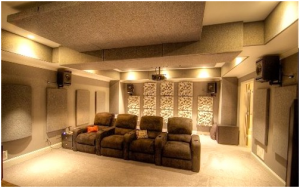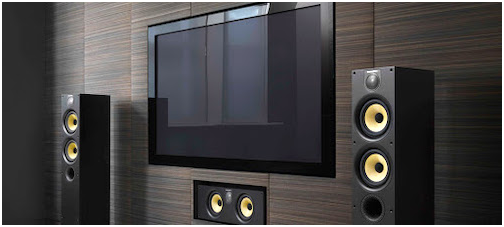Acoustic sound control is often underrated when it comes to the best in-home experience. This is essential because most people assume this to be a very complicated upgrade even though it is easier than we often think. It is actually much easier than installing a simple wi-fi system, or other basic home electronics, and you can learn more about the technology and available products at https://www.koikasacoustics.com.
So why do most homeowners shy away from improving their home acoustics? Because acoustics appear to be more complicated and daunting than installing wires and speakers. Knowledge of the advantages might also elude many. We are not saying that all acoustic projects are straightforward; some aspects like managing bass can be challenging. Here are some of the ways you can improve acoustics in your in-home theater experience:
Table of Contents
Inspect Room Chatter
You can quickly inspect room chatter by clapping your hands. The long, trailing echo that you hear is what we call room chatter. It occurs when sound is reflected off hard surfaces, and a dense reverberation is created that makes some dialog difficult.
We all know how annoying it can be to be in a loud room, especially if you are trying to have a conversation with someone in the same place. Though your brain is capable of ignoring certain sounds, it requires tremendous effort to do so.
Absorb the Echo
Unlike our brains, microphones are not so selective. Microphones will pick up whatever energy is in the room and reproduce it. This is why broadcasters have been using absorptive panels for decades to eliminate powerful reflections that can make it impossible to hear what the commentator says.
This logic will also apply if your video conference in your in-home theater, which is why you need to have acoustic treatment on your walls. Find acoustic panels that will offer thickness that will effectively lower the frequency being absorbed.
In most studios, the performance of the panel will vary with the density. If you are looking to absorb energy in the voice range, thinner panels are recommended.


Manage Bass
While high frequencies tend to beam, low frequencies are mostly omnidirectional. To improve acoustics in your in-home theater, high frequencies are recommended because you can easily manage them.
However, managing bass is a tad bit difficult for most people.
Absorptive panels are not meant to stop sound; they can only reduce energy in your room. However, it would be best if you had mass to control audio from escaping your theater.
This is the cause of decoupling as well. Subwoofers and full-range loudspeakers tend to produce bass or low-frequency waves that echo off walls to create hot spots commonly known as room modes. The idea is to make the two identical waves produced by the room modes to cancel out each other and create a dead spot.
You can achieve this by using bass traps to attenuate low-frequency energy in your in-home theater. This is the most effective way to reduce additions or cancellations. If you have a dedicated home theater or acoustic room, you should improve the acoustic treatment to effectively elevate the experience to that of a real theater.
For the best results go to a home theater store to find the right sound system that is affordable for your home.
Determine How Much Absorption You Need
If you are using your in-home theater as a broadcast station or recording studio, you need a lot more absorption than a home listening studio. Absorption will be determined by the type of your in-home theater and the application.

